Christopher Columbus is credited for discovering North America when he came here in 1492, but he certainly wasn’t the man who discovered it. As I learned in public school,
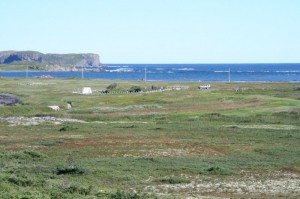
around the year 1000, Leif Eriksson, son of the adventurer Erik the Red, sailed west. He was probably not the first to make this trip, but he is recorded as finding a land where nice grapes hung thickly on vines. The name Vine Land stuck.
Viking Norsemen arrived on a lonely outpost in the northern part of Newfoundland where they established a small settlement. Pat Sutherland with the Canadian Museum of Civilization, has done extensive research that seems to show the Vikings also left artefacts on Nunavut, Baffin Island, and Labrador.
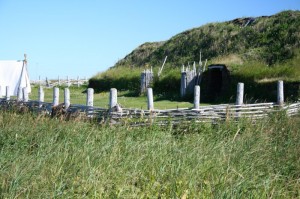
They may also have visited south to Nova Scotia and surrounding areas. Although the climate was warmer 1000 years ago, it may not have been warm enough farther north to have produced the vines of grapes that caused Leif Eriksson to name the land Vine Land. These likely were found to the south.
The L’Anse aux Meadows National Historic Park is worth the long drive to
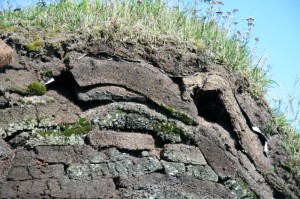
get there. On Newfoundland’s west coast you head north past Gros Morne National Park almost to the very tip of a lonely peninsula. Route 430 follows the seacoast with spectacular views across to mainland Labrador. At Eddies Cove it strikes inland across the peninsula to Saint Anthony. Although you turn north before reaching this fishing village dating back to the 1500’s, you should take time to visit this town which is a favourite place for whale watching.
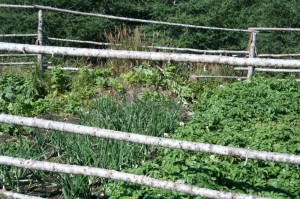
The highway winds through barren rock sparsely covered with vegetation in places. In other places there are steep hills and lots of short evergreen trees. It’s interesting to see small gardens along the road, tended by people from town who have managed to find a pocket of soil large enough, and fertile enough to grow their vegetables.
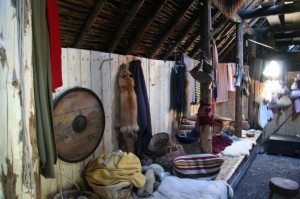
As you walk into the L’Anse aux Meadows NHS you are struck by the emptiness of the area. Yet in the midst of wind swept isolation you see several large humps that upon closer inspection reveal themselves as structures built with sod walls with roofs layered with sod and grass. You enter to find a fire pit in the centre to remove the chill. Smoke escaped through the roof vents and probably caused a lot of stinging eyes and smoky lungs because smoke doesn’t always obey any rules, and might not all head for the upper vents.
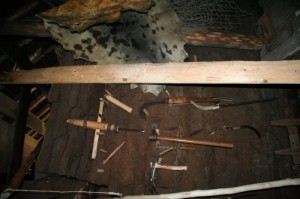
On the walls are hung furs, and nets, and finely woven garments. It’s obvious this settlement has been built for the long stay. Wooden bunks are built along the walls and covered with comfortable furs to sleep upon. Hung on pegs in the walls you will see an assortment of axes, hooks, and other devices made from iron. There is even an old loom for making cloth.
Outside you will likely find a couple of re-enactor Norsemen working in a fire pit. Here they will place dry wood, and cover it with
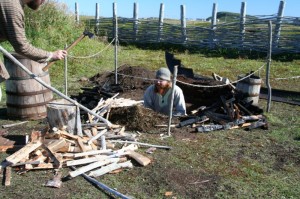
bog iron, close it over and let it burn to smelt the iron from the raw bog iron. This location is the first example of smelting in North America, and far ahead of the Europeans that Columbus brought to the shores of southern North America. The production of iron meant they could make nails, and other simple tools.
Travelling anywhere in Newfoundland will take you through miles of forests, lakes and mountain scenery. It’s extra special when you have the opportunity to visit a place like L’Anse aux Meadows.
Happy RVing !
For more than four decades James Stoness has travelled the roads of North America, photographing and writing about what he has seen. His travel articles and beautiful pictures have been published in several magazines and newspapers. He is also the author of five western novels. Visit his website at: www.stonesstravelguides.com
